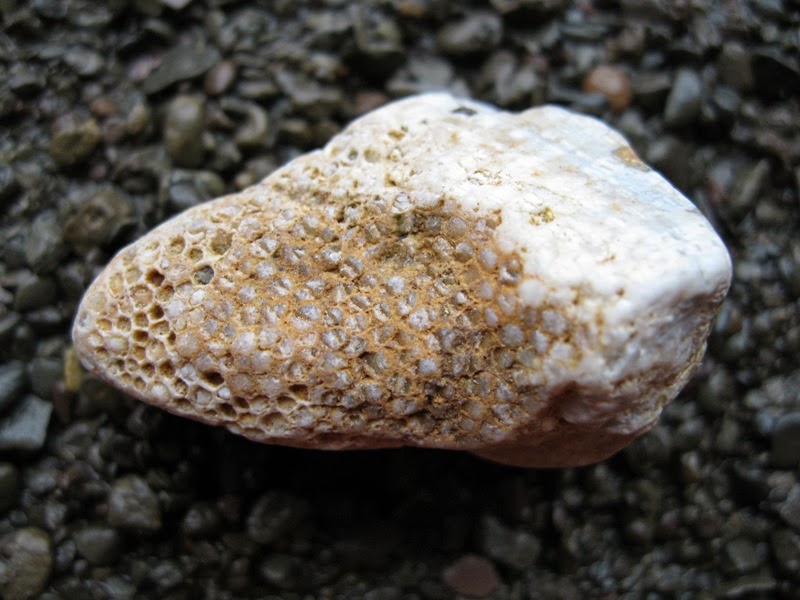Geology books describe an ancient inland sea that once covered a huge area of our country including the small spot where we now live. Geology is almost a synonym for speculation since this science evolves as the experts gather to share recent insights and postulate on how it all might have happened. Events were documented in the stones but how do we read this record? By reading books, consulting experts and looking at what is in hand, insight that is tenable can be found. In all honesty, everything written here should be questioned.
Salt is presently mined near Ithaca, New York. Historical record describes a salty spring near what is now Syracuse, New York that was used by Native Americans to produce salt for trade. The presence of salt in massive quantities nearby rather clearly establishes that the ancient sea contained salt water. My found fossil coral is similar to what can currently be found in today's oceans so it is a safe bet that I have found marine fossils.
Honeycomb Coral is a popular name assigned to a group of fossilized coral. A single coral polyp occupied each cell. Honeybees build uniform hexagonal cells while this coral is built of four or five sided cells of differing size. Still, the journey from living organism to skeleton to fossil is filled with events that could have altered some or all traces of the structure. Then the glaciers pushed it about breaking it into small pieces. Tumbled in melt water torrents, each piece was polished nearly smooth. I found each of the pictured pieces in my gravel lane or in an exposed face of my gravel bank.
Tabulate Coral is another name given to this type of coral. When the coral was alive, each table was occupied by a single coral polyp. As its home became filled with waste, the life form built a new home above the old home. This fossil is a slice from top to bottom showing the internal structure of the stacked tables. Dissolved minerals in the dwindling sea crystallized in the voids preserving the structure of the coral. Each piece is about the size of part of my thumb.
Various colors in the deposits filling the cells suggest that the crystallization of minerals dissolved in the water was somewhat chaotic. I have observed a change in color when some specimens are first exposed to light. Clear cement has blackened in the sunlight. Recent life in my driveway may be partially responsible for the variety of colors present here. I find this piece fascinating. How did it come to be in its present form? Some of the chambers appear to be filled with calcite while others may contain quartz. Favosites is another name applied to this type of coral.
To stage these pictures, I washed some of the sand that was moved inside for winter use on the driveway. The wet sand held the irregularly shaped fossils in place so the desired faces could be photographed. Our lane is built of gravel mined on our land or from a nearby commercial operation. That means that each pictured fossil coral was found in a kame terrace located near Mt. Upton, New York. Although each fossil was found here they were not formed here. Each is well traveled having been carried a great distance from their place of origin by the cycle of glaciers that more recently impacted this area.




No comments:
Post a Comment